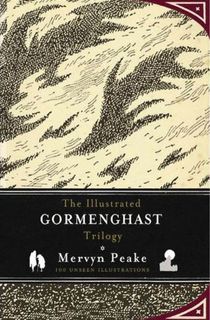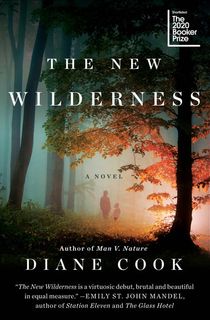With climate change in the news and more people understanding that our planet is dying through our own negligence, we are seeing culture react and riff on these issues. Many novels have started incorporating climate change into their narratives, and climate science fiction, or cli-fi, has grown in popularity over the years. In the following thirteen books, the unstable weather itself becomes a vivid character. These horror-tinged cli-fi books will make you think differently about the future, and will keep you reading long into the night.

Annihilation
The first volume in Jeff VanderMeer’s Southern Reach trilogy did wonders for climate change and overall awareness of our ailing planet. The real star of the trilogy is Area X, a region that has been completely cut off from the rest of the planet and has its own ecosystem and landscape. By typical Earthen standards, it is full of vibrant impossibilities. The novel focuses on the 11th expedition into the area, the previous ten having failed. VanderMeer’s trilogy is a must-read and among the best examples where weather itself becomes a living, breathing character.

The Shuddering
Siblings Ryan and Jane are keen to have one last big blowout celebration in their father’s cabin in the mountains of Colorado. They invite a few friends and set about having a grand time. Although Ryan and Jane are blindsided when something terrible happens, the real horror is the unexpected blizzard and how it transforms the terrain into a foreign land that isolates the partygoers. Like a vengeful enemy, the blizzard is alive and keen to test them.

The Terror
Dan Simmons’ novel manages to capture the sheer dread that weather creates, like a heavy blanket over every scene and character. The story unfolds around the true story of Sir John Franklin’s last great expedition. Two ships departed from England for the Canadian Arctic looking for a Northwest Passage to the Pacific, but the whereabouts and outcome of the expedition remain a mystery. Simmons draws from the real reports to weave a nightmarish tale of ice and monsters. However, what he does best is give nature, specifically the weather found out at sea, a spot in the main cast.
Related: 11 Chilling Horror and Thriller Books to Read This Winter

The Illustrated Gormenghast Trilogy
Mervyn Peake’s trilogy is a long-standing cult classic and among the finest examples of worldbuilding. The central location is a crumbling castle with its own mythos, complete with Gothic architecture, hidden stairwells, dungeons, and a chilly setting that takes on a life of its own. Clocking in at nearly one thousand pages, it’s also quite the commitment for readers. Peake is unlike any other writer, and this trilogy is something to experience.

The Sheep Look Up
Back in the 70s, science fiction author John Brunner had already made a name for himself with his previous novels, Stand on Zanzibar and The Shockwave Rider. The former focused on overpopulation while the latter delved into cyberpunk territory. However, it was The Sheep Look Up that really saw him enter a new realm of prescience.
At its core, the main character of this dystopian narrative is weather, which has changed drastically as a result of climate change and global warming. With unsafe beaches, gas masks, and pesticide-resistant bugs, weather takes on a villainous role in Brunner’s book. However, the more you read, the more you realize that perhaps the planet itself was less the villain and more the victim of neglect.

Dark Matter
Split across two time periods, 1947 and 1937, Michelle Paver introduces a character named Jack Miller who embarks on a one-year research expedition in the Arctic with three other men. The wilderness becomes a manifestation of Jack’s loneliness as days quickly become night and the snow falls endlessly. Weather becomes as much a metaphor as it does a character pushing against the expedition, as if warning of what exists in the Arctic. This is quite the chilly read.

Salvage the Bones
Jesmyn Ward’s masterful novel deftly increases the tension day by day as an antagonistic hurricane continues to build off the Gulf of Mexico. Everyone is in a panic, stocking up on food and preparing for landfall. Over the course of twelve days, Esch and her family undergo a truly revelatory experience, cast against the leading role of one of the worst hurricanes in recent history, Hurricane Katrina.

The Mist
Though I prefer my misty weather to be of the Silent Hill variety, Stephen King’s short novel is memorable for its exploration of the unknown by way of a dense mist or fog. In the absence of sight, a town faces the demons and monsters that hide in the mist. The book focuses on survival and pack mentality, with the mist adding an intriguing and mysterious element to the story. Readers will race through the book to learn more about the enigmatic mist, especially since it disappears as quickly as arrives.
Related: Every Stephen King Movie, Ranked

Ill Wind
Now for something different. Rachel Caine’s novel is more urban fantasy than the titles mentioned above, which tend to be dystopian fare. Joanne Baldwin is a “weather warden,” someone that can control certain aspects of the weather. Here we see weather become a friend to wardens like Joanne, which translates to a compelling and highly mysterious series of ideas that keep readers invested.

The Perfect Storm
Based on a true story, The Perfect Storm tells the tale of the Andrea Gail and her crew as they desperately head into dangerous waters in hopes of making their fishing quota. When they delve into the depths, a deadly storm heads their way and wave after wave tosses around the helpless ship. This is a true example of how weather is the main character in all our stories, so often determining our days and informing the outcome of our lives.

Roadside Picnic
This list wouldn’t be complete without one of the most influential science fiction novels out there. Roadside Picnic is the basis for the film Stalker, which would go on to inspire the video game series S.T.A.L.K.E.R. Red Schuhart is a stalker—a rebellious mercenary who risks his life to enter the Zone and collect mysterious alien artifacts. The Zone has a life of its own, with a desolate and unpredictable landscape that few dare to enter.
Related: 13 Fascinating UFO Books for Believers and Skeptics Alike

The Road
Cormac McCarthy was inspired to write about his son and the issues with having raised a child later in life. Already well past middle age, McCarthy applied his concerns and anxieties to one of the most tender dystopian tales around. A father and son walk among a bottomed-out Earth, with scorched fields, dead trees, and ash everywhere. The antagonistic land is a reflection of the end of one world cycle and the beginning of another, all from the perspective of a father and son as they battle what remains after society crumbles.

The New Wilderness
When I first heard about Diane Cook’s debut novel and masterpiece, it sounded like a mashup of the best from McCarthy’s The Road and Jeff VanderMeer’s Southern Reach Trilogy. Though some of those comparisons may be apt—the book focuses on a mother-daughter relationship and a foreign and untold wilderness set apart from the rest of the world—Cook builds a world completely her own.
Related: Bram Stoker Award-Winning Horror Books To Quench Your Macabre Thirst
In a world full of pollution and overpopulation, Agnes lives in a menacing metropolis, where the smog is slowly destroying her lungs. Along with her daughter, Agnes volunteers to join the group of people that live in the Wilderness State, a social exploration to see if humans can still co-exist with nature. The novel will change the way you think about Mother Nature and “mankind.”










